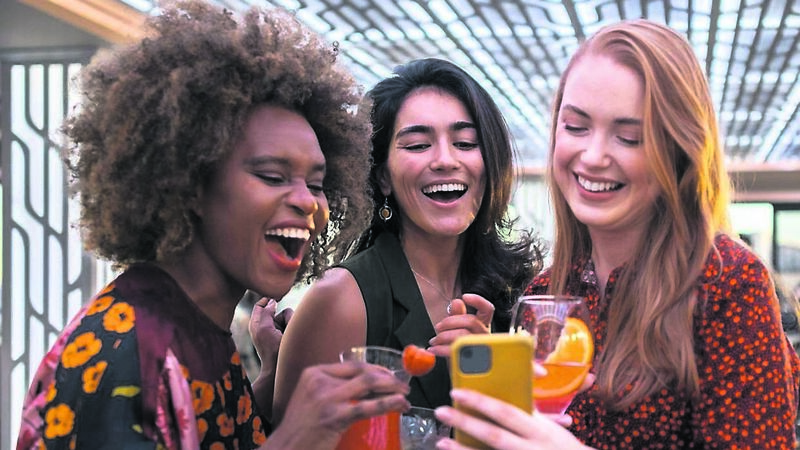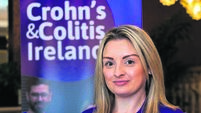I saw the top 10 most famous influencers, I didn’t know any!

There wasn’t much of a variety of goods or stores to choose from. When you needed something, you simply went to the local shop, paid whatever price was on the item, and took it home.
Most people only went to the shop anyway when they had to. Money was tight so consumers restricted themselves to buying the essentials.
Shopping centres were unheard of so there wasn’t much competition either, unless you travelled to the big stores in the city and that journey was often too much trouble.
Except for December 8, often referred to as farmer’s day, when country folk headed to the big smoke for what was the traditional Christmas shopping day. It’s also the Feast of the Immaculate Conception, and as Catholics were required to go to Mass that day, many treated it as a holiday and a chance to stock up on presents.
In 1958, they advertised a pure mohair coat “in the newest and most attractive styles and colours” for £16-16-0 at Grants, “Cork’s Real Value Store”.
You could always have the correct time with a watch, readers were told, from G.P.Holst, Watchmaker and Jeweller, 29 Marlboro Street, Cork, “for a fine range of watches, clocks and jewellery”.
If you needed transport, you might have been interested in an ad for “Car Hire, self-drive or chauffeur driven from Cross’s Garage Limited, South Mall, Cork.”
One ad in particular caught my eye: “If you are RUPTURED you need not suffer. You need not despair. Many thousands have discovered the blessed relief that the Beasley appliance can bring. Fitted with an easily adjustable AIR CUSHION, the ‘Beasley’ gives you real comfort with safety. Let Beasley’s help you as only Beasley’s can. T.R.LESTER LTD. - THE CHEMISTS, CORK.”
In the 1980s, The Golden Pages came along and that was full of ads for goods and services and, as the jingle went, you could let your fingers do the walking.
Every household had one of these things and it was the go-to book when you needed anything. It served us well until the advent of the internet. Everything changed after that.
Now, Google tells us all we need to know and allows us to get whatever we want without leaving the comfort of the chair... or the Beasley’s air cushion.
Prior to the arrival of the internet, we knew exactly what we were getting and where it was coming from. That’s not the case any more though because we’re being bombarded with ads online, and it’s not easy to figure out what’s real or fake or whether it’s made in the next village or a Chinese sweat shop.
Influencers are flooding social media too, and bringing a modern form of advertising to our screens. According to the BBC, there is no set definition for what an influencer is, but essentially it is someone who uses social media to literally influence others.
Young people trust those they see in their feed every day, which gives an influencer the power to affect their purchasing decisions. That’s a lot of power - and responsibility!
Many social media influencers present as experts within their respective areas, like health and beauty, wellness, fitness, fashion or whatever, and they review products using their authority, expertise, or relationships with followers to influence what they buy.
According to Buzz/Voice, and I have no idea who or what they are, the top 20 influencers with the most famous accounts for 2025 are Khaby Lame, Addison Rae, MrBeast, Ninja, Charli D’Amelio, Zayn Malik, Julia O’Mara, Blair Eadie, Yara Shahidi, Amanda Cerny, Kayla Itsines, Autumn Calabre, Cassey Ho, and Marques Brownlee.
By the way, you probably realise there aren’t 20 there and that’s because I lost interest halfway through.
I didn’t recognise a single one of them. That’s understandable given that I’m in my late sixties and we move in different circles. I’m not their target audience, but they do wield a lot of influence with impressionable youngsters.
In this digital age, humans are drawn to visuals, and influencers excel at creating content through photos, videos, and behind-the-scenes glimpses.
But how do we know if they are genuine or if it is just sales patter? And who regulates influencers, and what happens if they advertise products that have an adverse effect on someone’s health? Or if their message sends a consumer down the road of buying fake or substandard goods?
After all, influencers are in the marketing business to make money. They portray themselves as experts and often give the impression they live the perfect life in a perfect world. We all know there is no such thing, so how much of what they do is simply a performance for their followers?
Somebody said influencers share only the best parts of their lives, creating a polished, idealized version of reality. That’s why, you’d never find them photographed on a Beasley’s Air Cushion for a rupture.







 App?
App?




